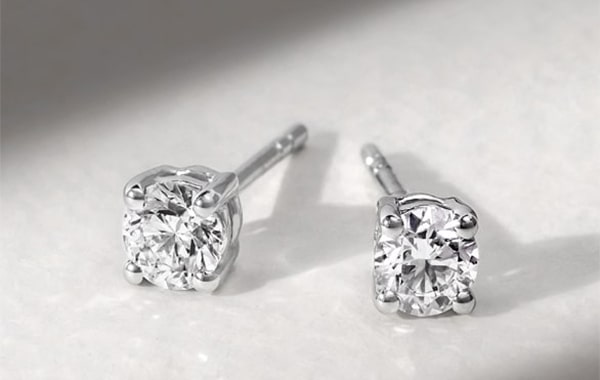Ruby
The birthstone of July, Ruby is believed to be the gem of Love. Its name comes from ‘ruber’, which is Latin for ‘red’. According to ancient lore, many believe that mystical powers lie within this intensely coloured red gem. The richness of colour, the brilliance of the reflected light and the clarity of the gem determine the quality of a ruby.
Fine quality ruby above three carats is rare and more valuable than all other coloured gemstones, with the exception of some alexandrites. It can often be more valuable than the equivalent white diamond.
In the evaluation of rubies, colour is a very important factor. Colour divides into three components; hue, saturation and tone. Hue refers to “colour” as we normally use the term.
In ruby the primary hue must be red. All other hues of the gem species corundum are called sapphire. Ruby may exhibit a range of secondary hues. Brown, purple, violet and pink are all possible.

Where are rubies mined?
Mines around the world produce a diversity of shades of red. For example, the Mogok valley in Myanmar is famous for its “pigeon’s blood” or pink-red colour. Rubies from Thailand and Cambodia typically have a strong, dark red colour, and African rubies tend to be a reddish brown.
Traditionally, the highest quality ruby was sourced from Myanmar (Burma), mined in the legendary areas of Mogok and Mong Hsu. From an ethical standpoint, better sources of high quality ruby are Thailand, Madagascar, Tanzania and Sri Lanka.
Are rubies treated?
Most rubies are routinely and traditionally heat-treated to improve clarity and reduce undesirable brown tones; this is an assumed and accepted process. Fine quality ruby that is proven to be untreated will command very high prices. Less than 5% of fine stones would fall into this category. Treatments of gemstones must always be disclosed along all points of sale.
Another common treatment to improve the appearance of ruby is glass filling or fracture filling. This is a far less stable treatment and is considered a deceptive and undesirable practice. Applying heat to a fracture filled ruby or placing it in a ‘jeweller’s ‘pickle’ can often result in a frosty, white coating on the stone that cannot be reversed.
Are rubies suitable for jewellery?
Being a 9 on the Moh’s scale of hardness, it is an ideal gemstone for everyday wear. The contrast of deep red ruby alongside bright white diamonds has made ruby a mainstay in the fine jewellery world. A popular choice among many royals and celebrities, diamond and ruby jewellery is highly sought after and exquisitely beautiful. Whether it is featured in an engagement ring or any other adornment, ruby is an exquisite gem rich in history and romantic symbolism.

